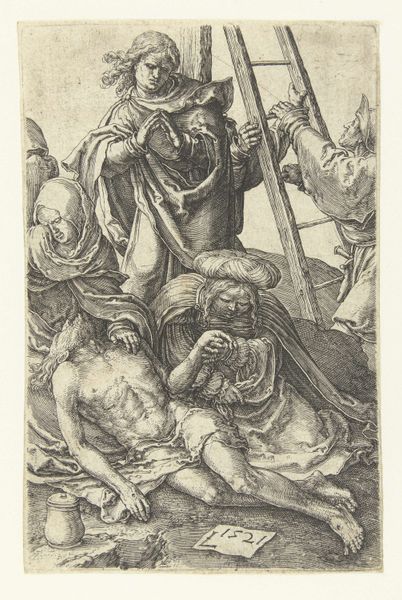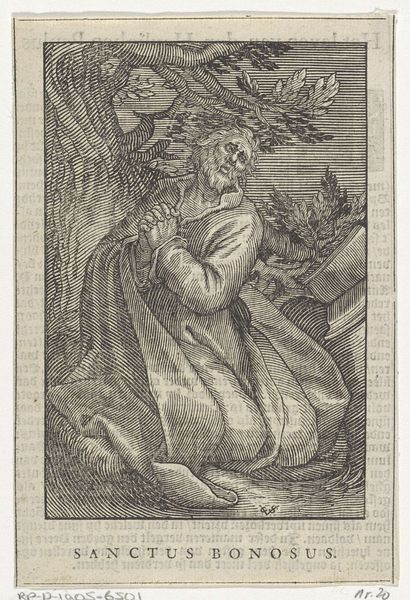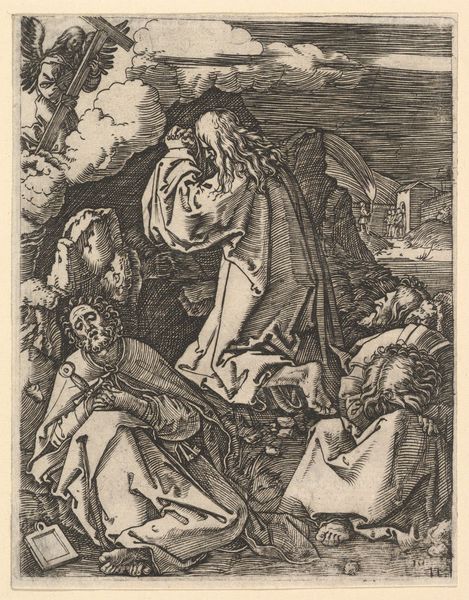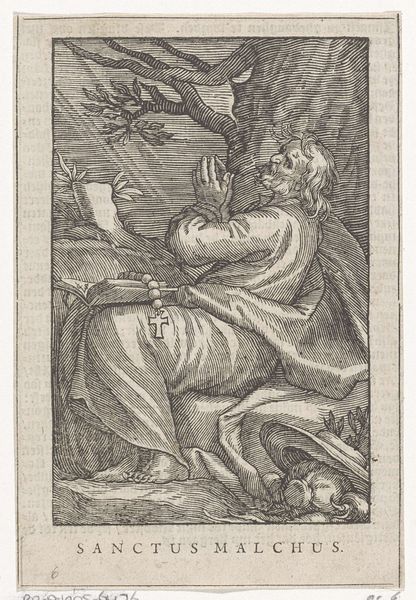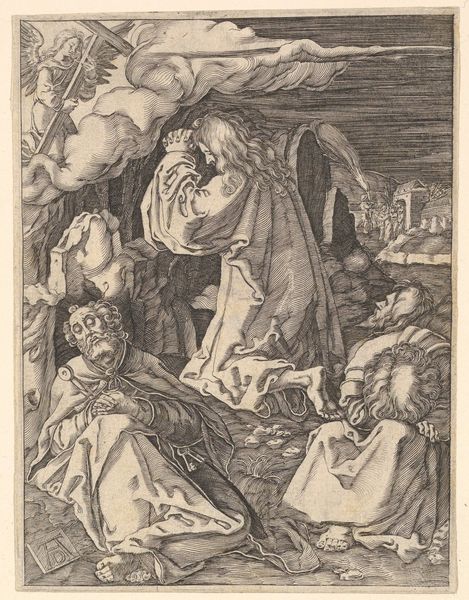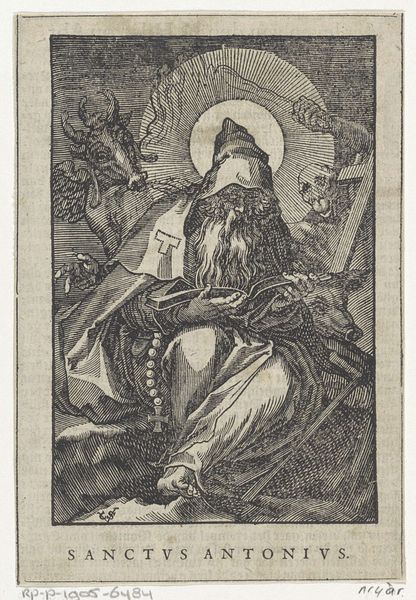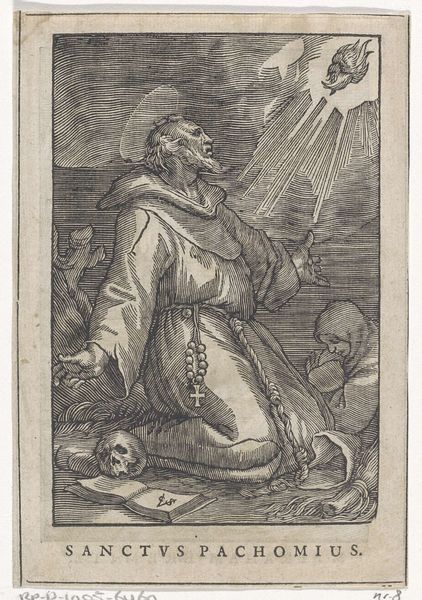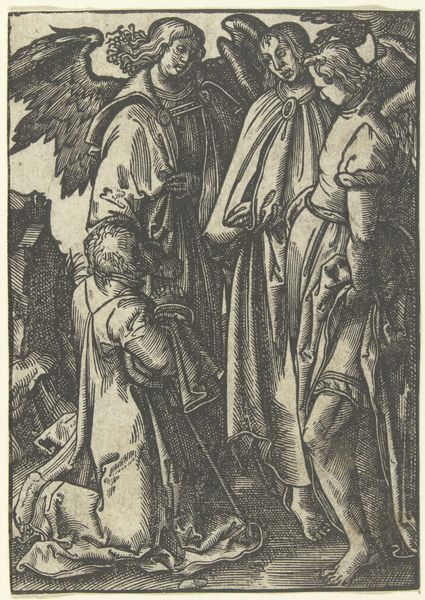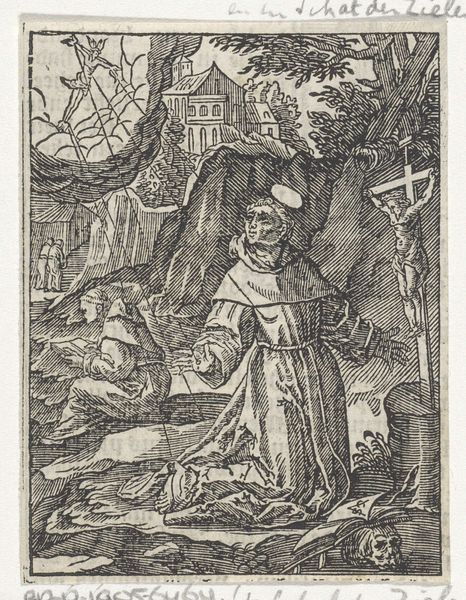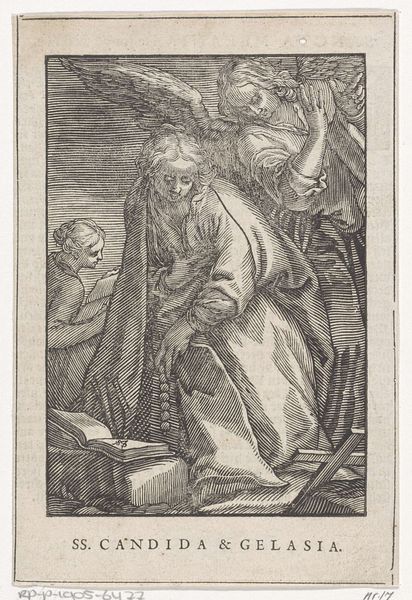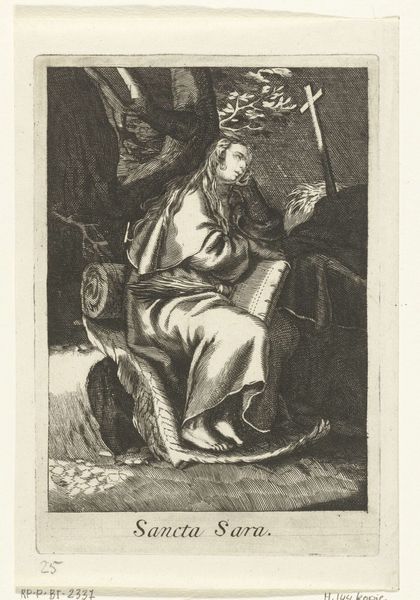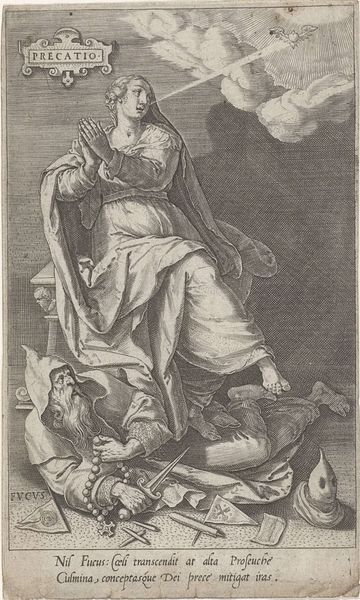
print, engraving
#
baroque
# print
#
figuration
#
history-painting
#
engraving
Dimensions: height 155 mm, width 105 mm
Copyright: Rijks Museum: Open Domain
Curator: This print from 1644, made by Christoffel van Sichem the Younger, is titled "Saint Serenus as a Hermit". It resides here with us at the Rijksmuseum. Editor: Immediately, I'm struck by the palpable sense of hardship emanating from the central figure, particularly accentuated by the skull prominently placed next to the crucifix. Curator: Indeed, the juxtaposition of religious devotion and mortality is key to understanding this image. Serenus’s status as a hermit is conveyed through these stark symbols – and the crucifix in fact serves to support the skull. In Catholicism, Serenus represents, historically, the guardian saint against gout. Editor: What an interesting inversion! We often consider sainthood a form of empowerment, yet here, Serenus seems almost burdened. I wonder if viewers then, as now, would interpret that hunched posture and that look of fatigue as... reluctance, perhaps? Given the Baroque context, was that something people could say through imagery? Curator: That reluctance, if present, is likely more a reflection of the artist's commentary on human frailty, within the narrative and socio-religious frame. Baroque art often explored extreme emotions and moments of intense spirituality, including doubt. In the 17th century, Counter-Reformation art particularly pushed such visuals as a tactic, and indeed, many Northern artists found this style resonant. It suggests that faith demands sacrifice. Editor: And look, the composition, the linear engraving... they create a powerful emotional weight. The very texture of the print seems to amplify Serenus’s physical discomfort, especially around the cross and other markers of monastic, devout living like that single jug of water over on the right side of the visual plane. The contrast between light and shadow throws his haggard expression into sharp relief, really heightening the narrative's impact. Curator: Absolutely, the use of engraving really brings home those themes of austerity and hardship that are foundational for so much understanding of monastic and solitary faith. In art of the period it also allowed for wider dissemination through mass printmaking – thus more believers had wider visual access to iconic, religiously potent, narratives. Editor: Seeing it now, it certainly prompts one to think about how suffering has been historically valorized and even aestheticized. Curator: Yes. Through these symbolic and narrative cues, this humble print invites deeper reflection on faith, sacrifice, and mortality—themes that continue to resonate deeply even today. Editor: And the ever-relevant theme of individual devotion set against institutional power, given this piece’s specific religious contexts, remains an active and engaging way of interacting with the history it showcases for us.
Comments
No comments
Be the first to comment and join the conversation on the ultimate creative platform.
